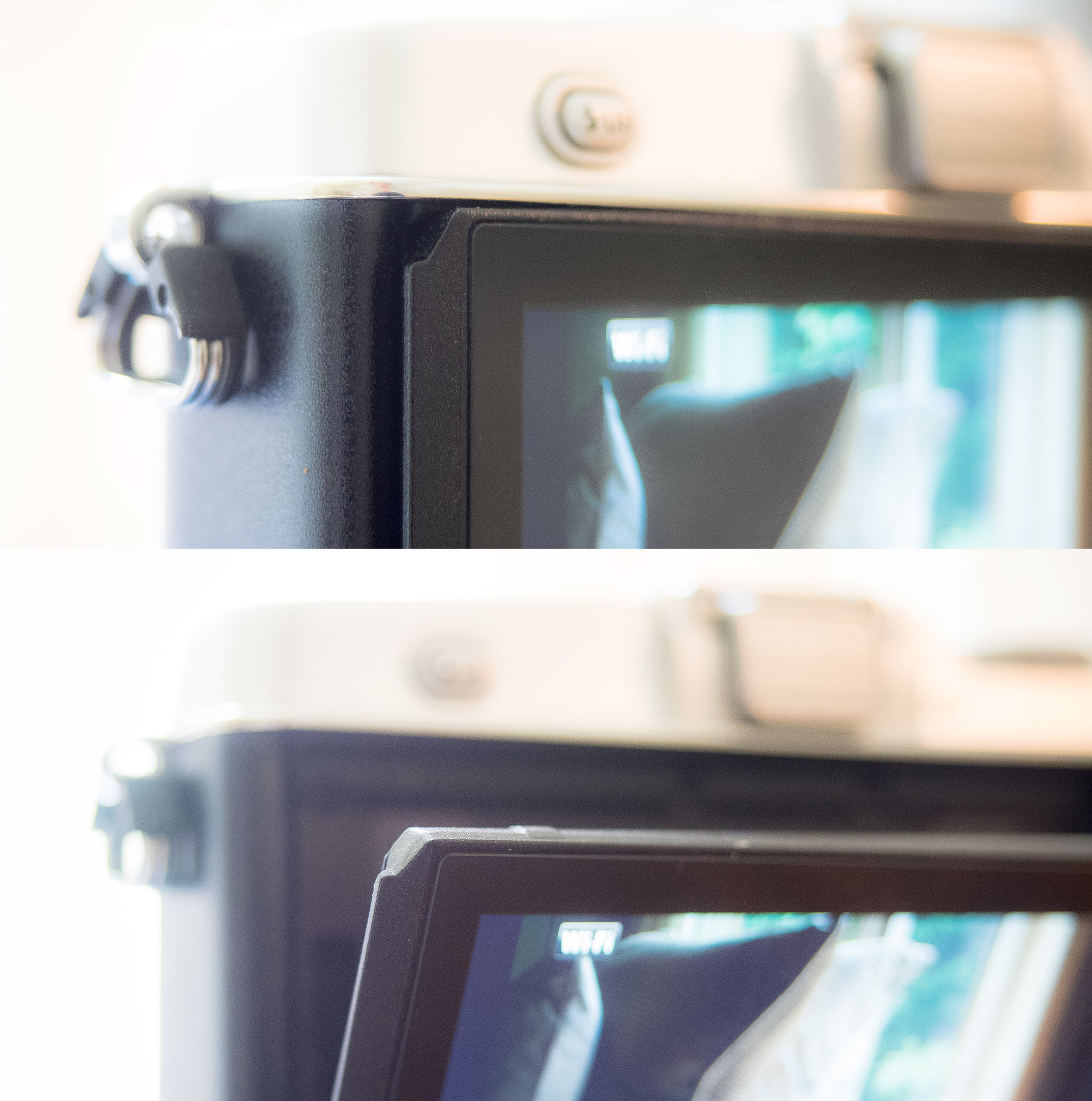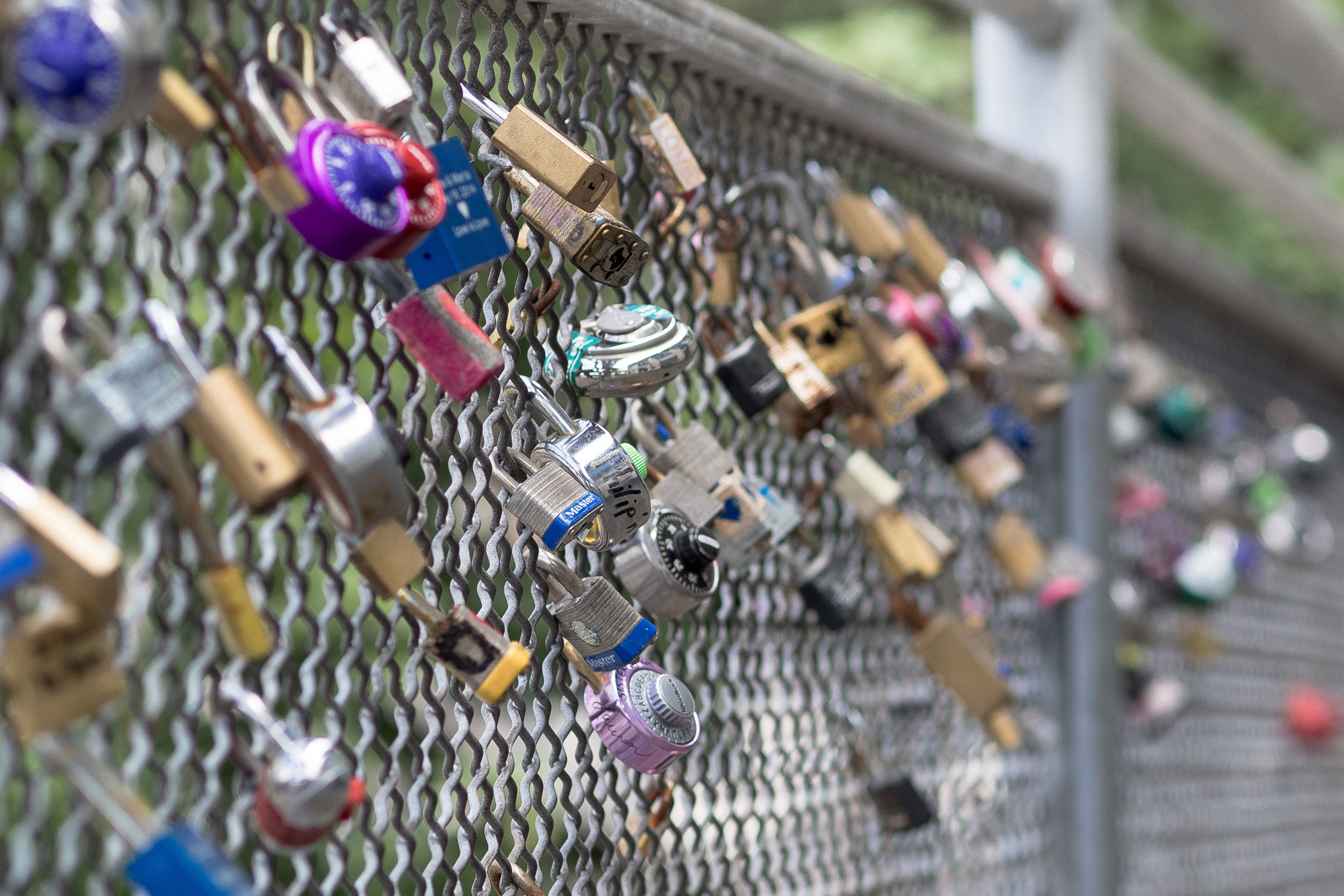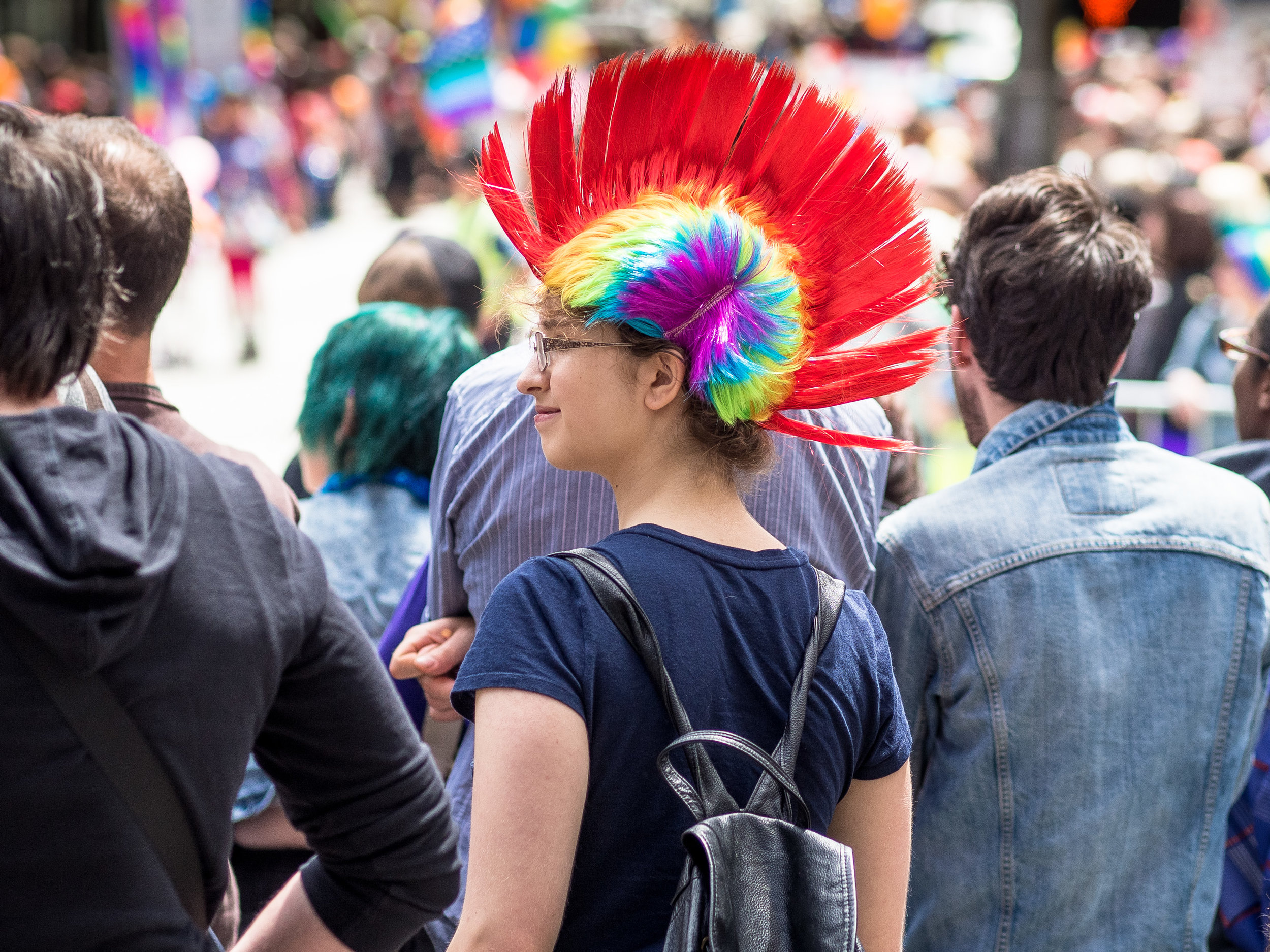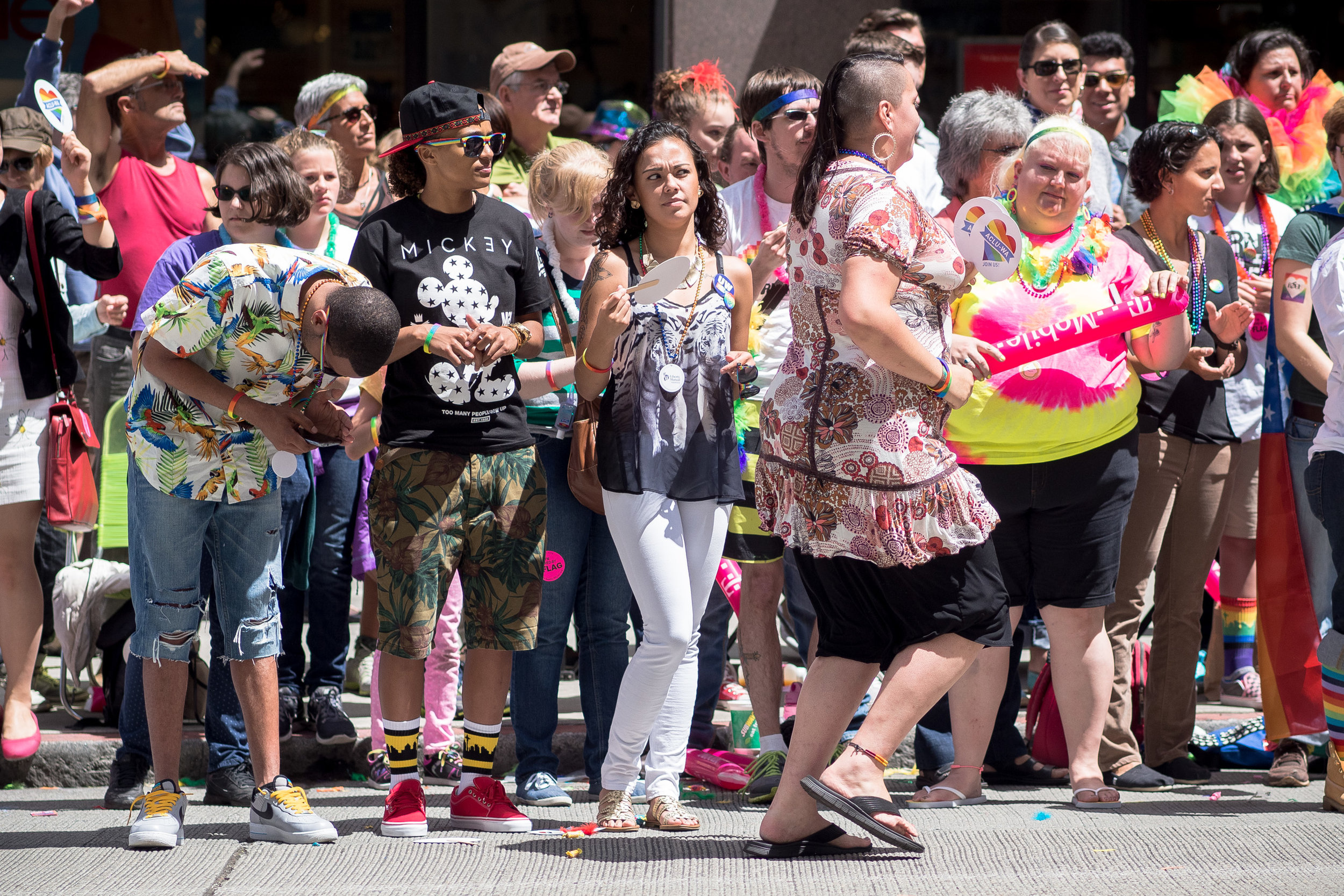Olympus Pen: A Date In The City
This is the second in a three-part series about the Olympus Pen E-P5, a mirror-less camera that squeezes just the right amount of pro features into a pocketable package. The first article was called Olympus Pen: Portraits of a Camera. Here we look at shooting pictures with the E-P5 and trying out some of its features.

I took the Pen E-P5 out for a day of shooting. Oh my. It was even more pleasurable to take pictures with, than to take pictures of. Previously I talked about how you can get better photos out of a camera that you really like from the outset. Let's see how the E-P5 handled a number of different shooting situations - and how I felt about it at the end of a very long day.
Street photography is not easy because it's not always possible - or even desirable - to get people to pose for you. So it requires an ability to change settings on the fly. It helps to be able to first anticipate the appropriate camera settings - including the appropriate lens - 'just before it happens'. But yeah. That's what makes photography fun.
Panoramas can be vertical
This was the first photo I took as I left my house, headed for the ferry to Seattle. Clouds were moving through pretty quickly, providing a kaleidoscope of sunbeams and dashes of bright greens. The 17mm f/1.8 that comes with the camera is a 35mm equivalent with a moderately wide angle of view that is excellent for all-around photography, and small enough to drop the camera into a coat pocket. But no matter how I tried, I couldn't get the full view into the frame. So I simply shifted to "M" on the dial - to keep the exposure exactly the same for all frames - and took three separate photos which I then stitched together in Photoshop.
Horizontal, too
 Sometimes, it's nice to use the distortion of a wide-angle lens to accentuate a view. For example,in this case, a dark front moving across downtown as the ferry boat pulled in. The clouds were looking foreboding, but my smart phone was telling me 'sunny' in the afternoon and I was hoping that would be the case. This panorama was taken at 12mm (24mm equivalent at full frame) and cropped from just one photo after correcting for perspective by adjusting the vertical axis slightly in Adobe Lightroom. You can see the original and the crop in the thumbnail (click to enlarge).
Sometimes, it's nice to use the distortion of a wide-angle lens to accentuate a view. For example,in this case, a dark front moving across downtown as the ferry boat pulled in. The clouds were looking foreboding, but my smart phone was telling me 'sunny' in the afternoon and I was hoping that would be the case. This panorama was taken at 12mm (24mm equivalent at full frame) and cropped from just one photo after correcting for perspective by adjusting the vertical axis slightly in Adobe Lightroom. You can see the original and the crop in the thumbnail (click to enlarge).
The Inverted Tripod
 The flip-up screen has several advantages over pressing the camera to your face using the EVF. By holding the camera with one hand and using the other hand either on the touch screen or shutter, the neck strap acts as an inverted tripod that provides good stability for reduced shake. Also this lower point of view can provide interesting angles. For example in this photo, the subject was sitting level with the lens of the camera. Another advantage for shooting incandida, you can pretend to be fumbling around with the camera rather than composing a shot. In my case, it's often a combination of both. The E-P5 and it's smaller cousin, the E-PL5, both have the flip-up screen, as well as all cameras in the OM-D series.
The flip-up screen has several advantages over pressing the camera to your face using the EVF. By holding the camera with one hand and using the other hand either on the touch screen or shutter, the neck strap acts as an inverted tripod that provides good stability for reduced shake. Also this lower point of view can provide interesting angles. For example in this photo, the subject was sitting level with the lens of the camera. Another advantage for shooting incandida, you can pretend to be fumbling around with the camera rather than composing a shot. In my case, it's often a combination of both. The E-P5 and it's smaller cousin, the E-PL5, both have the flip-up screen, as well as all cameras in the OM-D series.
Depth of Field
One of the advantages of M43 cameras is the ability to get relatively short depth of field, in a relatively small form factor. I like this because it allows the photographer to 'show' the viewer what attracted the photographer's eye in the first place.
Hold it high
 The monitor can be flipped out and down in order to hold the E-P5 high above while still seeing - and framing - the shot. Because both of my hands were occupied, I quickly switched to "face recognition focus" and let the camera find the faces for me. My only complaint - and this is a minor one - was that the monitor does not have an obvious 'catch' to open it with, so if you have fat fingers like me, you might do some fumbling (see thumbnail). Of course, this is by design so that you don't accidentally flip the monitor down. On the E-P5, it is much easier to flip the touch screen up from below, which is the more common usage.
The monitor can be flipped out and down in order to hold the E-P5 high above while still seeing - and framing - the shot. Because both of my hands were occupied, I quickly switched to "face recognition focus" and let the camera find the faces for me. My only complaint - and this is a minor one - was that the monitor does not have an obvious 'catch' to open it with, so if you have fat fingers like me, you might do some fumbling (see thumbnail). Of course, this is by design so that you don't accidentally flip the monitor down. On the E-P5, it is much easier to flip the touch screen up from below, which is the more common usage.
Recognizing Faces
 The face - and eye - recognition feature is excellent for simple point-and-shoot, without having to move the focus cursor - or the camera itself - around to find the subject. This works well for snapshots and I always use this when asking someone else to take a photo of me (still not really into selfies). It's also good for street shooting when you don't have time to compose a shot, or when it's too bright to see the touch screen (and you forgot to bring along the detachable EVF). Okay, there's that sun that my smart phone promised.
The face - and eye - recognition feature is excellent for simple point-and-shoot, without having to move the focus cursor - or the camera itself - around to find the subject. This works well for snapshots and I always use this when asking someone else to take a photo of me (still not really into selfies). It's also good for street shooting when you don't have time to compose a shot, or when it's too bright to see the touch screen (and you forgot to bring along the detachable EVF). Okay, there's that sun that my smart phone promised.
Quick Focus

 This kid was spinning around like a whirling dervish. I don't know what kind of sweets he had eaten, but he was all over the place. All Olympus cameras have a very quick focus but for this kind of activity, I switched to C-AF (Continuous Auto-Focus) which not only keeps the camera in constant focus, it tracks the subject as well. Switching focus modes is easy on the E-P5; with the Super Control Panel enabled, just click the 'OK' button to pull up the panel, then tap with your finger to select focus mode. If you want to switch back and forth quickly between different focus modes, just save the two different settings to two different "MySets" and assign them to different items on the main dial. Personally I don't use "iAuto", "ART" or "SCN" so I have specific MySets for each of those. That way, I can move between key settings without having to take my eyes off the subject or away from the viewfinder.
This kid was spinning around like a whirling dervish. I don't know what kind of sweets he had eaten, but he was all over the place. All Olympus cameras have a very quick focus but for this kind of activity, I switched to C-AF (Continuous Auto-Focus) which not only keeps the camera in constant focus, it tracks the subject as well. Switching focus modes is easy on the E-P5; with the Super Control Panel enabled, just click the 'OK' button to pull up the panel, then tap with your finger to select focus mode. If you want to switch back and forth quickly between different focus modes, just save the two different settings to two different "MySets" and assign them to different items on the main dial. Personally I don't use "iAuto", "ART" or "SCN" so I have specific MySets for each of those. That way, I can move between key settings without having to take my eyes off the subject or away from the viewfinder.
The detachable EVF
 Do I want a viewfinder? Do I not? Do I? Do I not? I have an E-M1 with built-in viewfinder, and it's beautiful. I find that I use it less than half the time - maybe as little as 10% of the time, depending on the type of photography I'm doing. But I don't want to be completely without it. The E-P5 offers a detachable viewfinder and, for me, that solves the problem. Without the EVF, the camera is svelte, small and ready for travel, quick in-and-out of pocket. But when the sun is shining and the touch screen is difficult to view, or when I need critical positioning of subject, I just pop it on. Looks like the person in this photo could use one.
Do I want a viewfinder? Do I not? Do I? Do I not? I have an E-M1 with built-in viewfinder, and it's beautiful. I find that I use it less than half the time - maybe as little as 10% of the time, depending on the type of photography I'm doing. But I don't want to be completely without it. The E-P5 offers a detachable viewfinder and, for me, that solves the problem. Without the EVF, the camera is svelte, small and ready for travel, quick in-and-out of pocket. But when the sun is shining and the touch screen is difficult to view, or when I need critical positioning of subject, I just pop it on. Looks like the person in this photo could use one.
For indoor photography, I normally switch to either the 17mm f/1.8 (which is great for low-light situations), or the 12-40 f/2.8 which is a bit large relative to other options, but allows better flexibility. This photo was shot at ISO 2000.
At art museums, some people look at art. Me, I can't help but look at other people. The E-P5 has a quiet shutter and works well at high ISO so it doesn't really bother people as long as you keep a distance and use the 'inverted tripod' to shoot from the hip.
How was our first date?
Expectations were high but the result left me yearning for many more dates. The E-P5 sits in the middle of the Olympus line-up in terms of size, but probably offers the largest number of features and functionality of any camera - from any format - that can be dropped into a large pocket. I found it extremely easy to use - actually easier than the more customizable E-M1. The combination of two rocker dials, one function button, clever mode switch, and 'my set' options on the main dial provide an optimum balance of one-touch controls while maintaining a streamlined design that leaves no dials or buttons sticking out. I felt instantly at home, instantly familiar.
Next: we'll take the Pen on a trip to Asia, traveling light.
Author's note: all photos were shot in RAW with minimal processing in Adobe Lightroom. I have created two pre-sets that reduce saturation while increasing vibrancy and adding very subtle vignetting at the corners. My 'outdoors' version of this has decreased highlights and increased light in the shadows. From those two pre-sets, I then make minor changes and I'm done.











